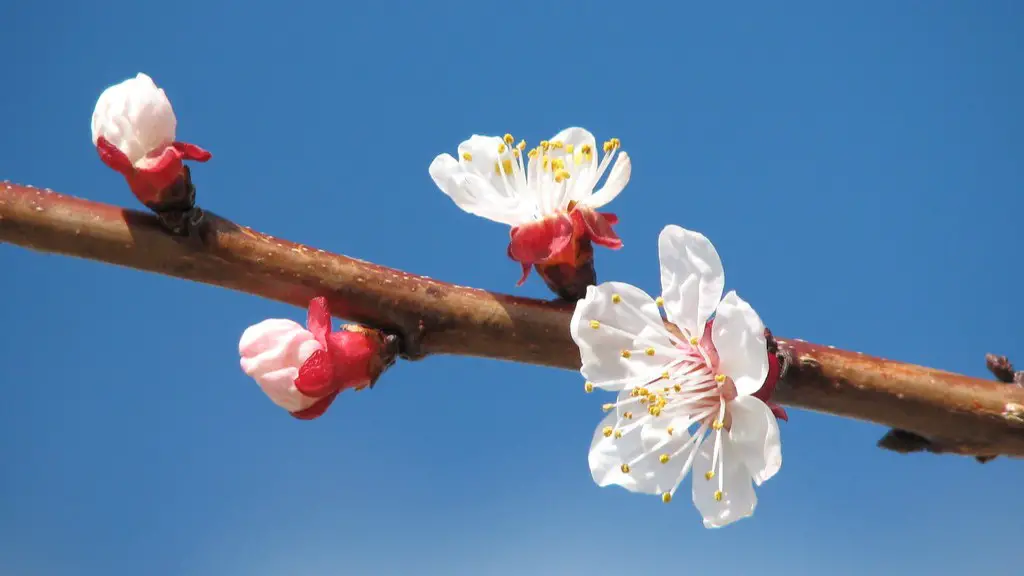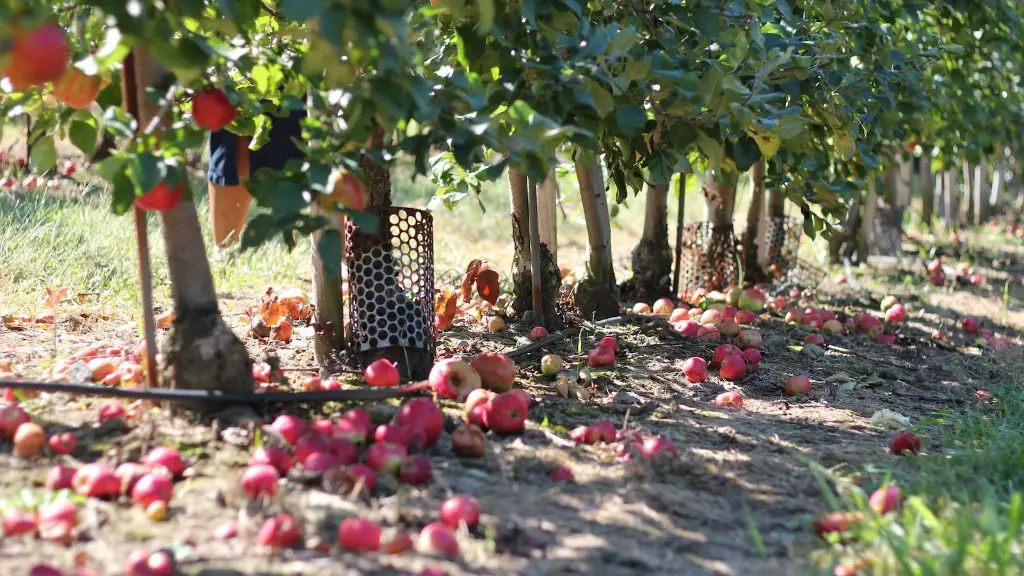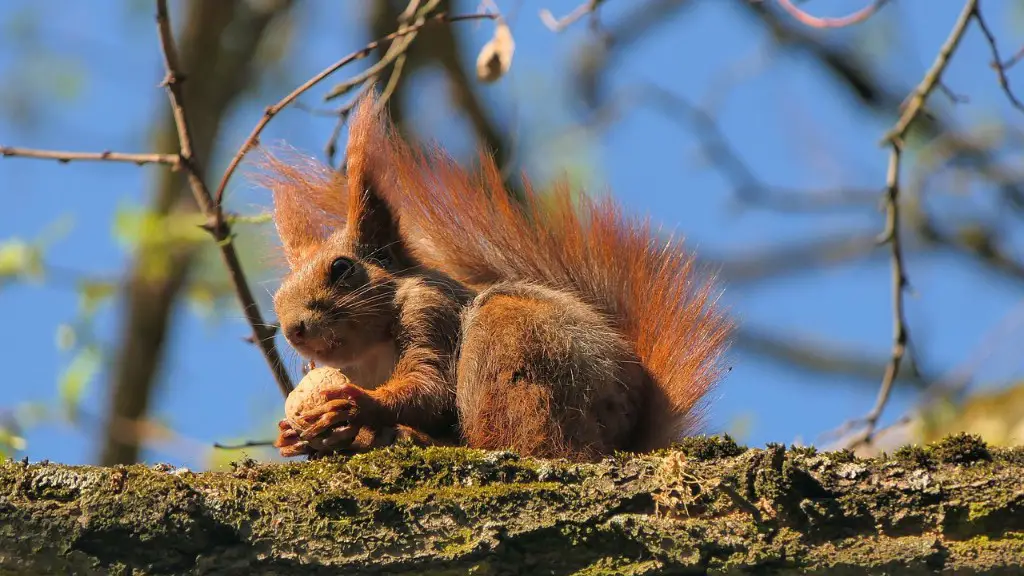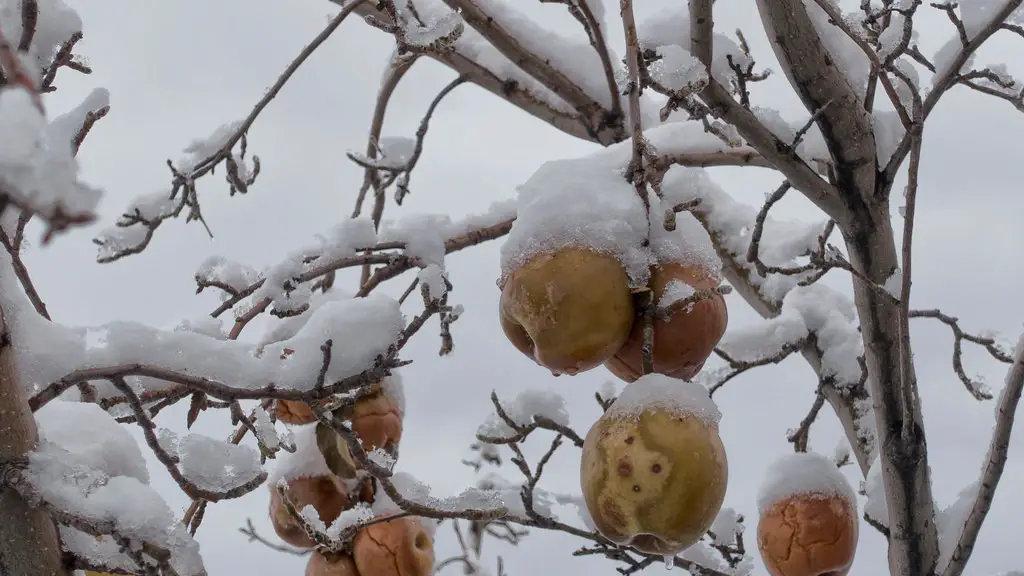Planting an apple tree from a seed is a surprisingly easy process, but it does require care and knowledge of the process for successful germination. The goal is to plant a seed in a warm, moist environment and provide the ideal conditions for the seed to sprout and grow.
To begin, you’ll need to acquire a large, round, healthy seed from either a store-bought apple or from a fallen apple in nature. Make sure to avoid any bruised or split open apples. Each seed should be cleaned and dried to help prevent any mildew or fungus.
Place the seed in a glass of water overnight to test and determine if the seed is healthy and viable. Any healthy seeds should sink to the bottom, and any defective ones should float to the top. Once you have identified the viable seeds, plant them as soon as possible.
You will also need some potting soil, a pot with drainage holes at the bottom, and a tray or plate that can collect the drainage water.
Fill the pot with the potting soil and lightly press the soil down before placing the seed on top. Cover the seed with an additional layer of soil, slightly higher than the surrounding area.
To ensure the soil remains moist, spray it with warm water from a spray bottle and cover the pot with a clear plastic bag to trap the moisture. Place the pot in a sunny location, such as a window sill. The temperature should be between 75-85 degrees and the soil should not dry out.
As the plant grows, fertilize it with a balanced fertilizer, such as a 10-10-10 formula, every four to six weeks. Water the soil when it starts to dry out and remove any weeds that may grow around the base of the tree.
Identifying Apple Tree Diseases
Apple tree diseases can significantly affect the growth of your tree. Common diseases can include fire blight, scab, and powdery mildew. Fire blight is a bacterial disease that causes leaves and shoots to become brown, shriveled and appear burnt. To prevent fire blight, prune the affected branches back to healthy tissue and make sure to provide adequate air circulation around the tree.
Apple scab is a fungus that results in discolored lesions on leaves and fruit. To prevent scab, remove infected leaves during the dormant season and maintain proper air circulation and ample soil moisture to reduce humidity around the tree.
Powdery mildew is another fungal disease that causes a white, powdery layer on the leaves of a tree. To prevent powdery mildew, proper pruning and providing adequate air circulation is necessary. Keeping the soil moist during hot and dry periods can also help reduce the risk of powdery mildew.
It is important to ensure that your apple tree receives proper attention throughout its life. Regular pruning and keeping an eye out for pests and diseases can help ensure healthy growth and production of apples each season.
Apple Tree Pruning
Pruning is essential for maintaining a healthy and productive apple tree. Pruning an apple tree at the right time and in the right way can help increase fruit production, promote healthy new growth, and protect the tree from diseases. The best time to prune an apple tree is during the winter months when the tree is still dormant.
The first step is to identify and remove any dead, diseased, or damaged branches. This will help to ensure that the tree does not spread any diseases to other parts of the tree. After this, remove any branches that are excessively crossing each other or rubbing together. This will help to maintain good air circulation and promote strong new growth.
Next, prune back any sucker growth, which are new shoots that develop at the base of the trunk. These shoots do not produce any fruit, so it’s best to remove them to help the tree use its resources more efficiently.
Finally, prune any branches that are too close to the ground or overhanging areas. This will help the tree to remain manageable and allow easier access for harvesting the apples.
Harvesting Apples
Harvesting apples from a tree is a rewarding and satisfying experience. Generally, apples will be ready for harvest when the fruits have started to turn a yellowish-red color, and the fruits are firm when lightly pressed. It is important to harvest the apples as soon as they are ripe, as leaving them on the tree for too long may lead to a bitter flavor or premature spoilage.
Once the apples have been harvested, remove any fruits that have been damaged by insects or disease. It is also important to remove any leaves that may have been dropped around the tree, as these can introduce diseases or pests to the tree.
To store the apples, place them in a cool, dry place such as a refrigerator. The ideal temperature for storing apples is between 1-4°C. Apples can be stored for up to three months if they are in optimal conditions.
Once the apples have been harvested and stored, they can be eaten, cooked, or turned into preserves or cider. It is also possible to propagate apple trees from their seeds and enjoy an even bigger harvest in years to come.
Apple Tree Pest Control
Pests can significantly affect the overall health and productivity of a tree. The most common pests of apple trees are aphids, caterpillars, and scales. Aphids are small, soft-bodied sucking insects that can be found on the underside of leaves and can cause discoloration, distortion, and yellowing of leaves and fruit.
Caterpillars are the larvae of moths and butterflies and cause holes and distortion in leaves and petals. To prevent caterpillar damage, it is important to keep the area around the tree clear of grass, weeds, and other sources of food. Pruning back any affected parts of the tree can also help to reduce damage.
Scales are small, hard-bodied insects that feed on the sap of a tree. To control scale populations, it is important to prune out and destroy any affected parts of the tree and research specific control methods for the particular species of scale that is affecting your tree.
It is also important to monitor and inspect the tree regularly for any signs of disease or pest damage. Routine pest control can help prevent significant damage and ensure a healthy and productive tree.
Fertilizing an Apple Tree
Fertilizing your apple tree is an important step in encouraging healthy and productive growth. Feeding the tree a balanced fertilizer, such as a 10-10-10 formula, every four to six weeks during the growing season can help provide the tree with essential nutrients.
When fertilizing the tree, make sure to spread the fertilizer evenly around the tree, avoiding contact with any buds, leaves, or fruit. The recommended amount of fertilizer for an apple tree is two to four pounds for every one inch of trunk diameter. If the tree’s trunk is two inches in diameter, for example, the amount of fertilizer should be between four and eight pounds.
It is also important to monitor the tree throughout the growing season and adjust the amount or frequency of fertilizer accordingly. Too much fertilizer can lead to excessive top growth, which can be difficult to manage and significantly reduce fruit production.
It is also important to mulch around the base of the tree. A three-inch layer of tree bark, wood chips, or straw can help to prevent weeds and retain moisture in the soil, allowing the tree to use its resources more efficiently.
Fertilizing your apple tree routinely and correctly can help to ensure healthy and productive growth, while taking into consideration the nutrients the tree needs throughout its lifecycle.



